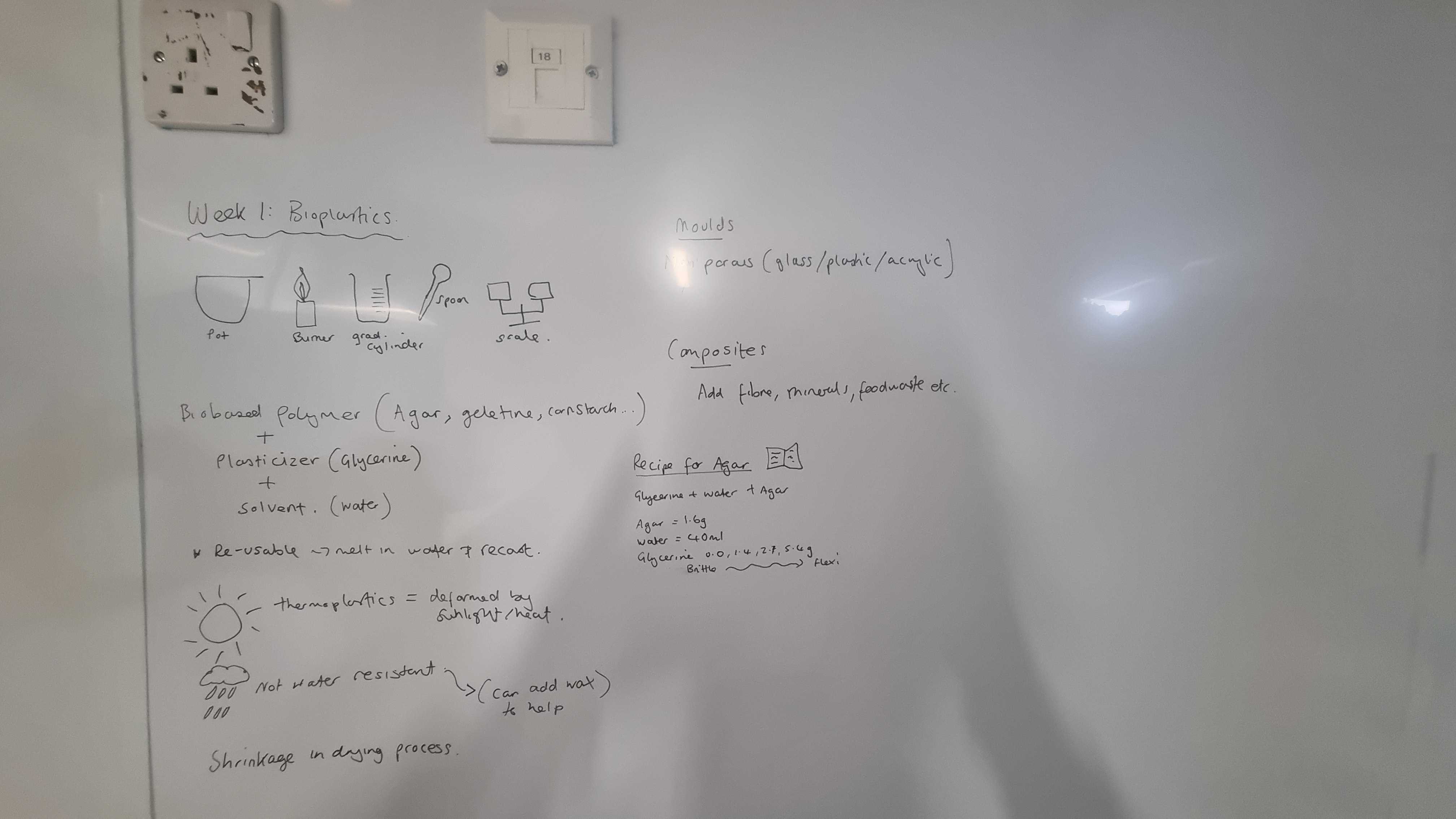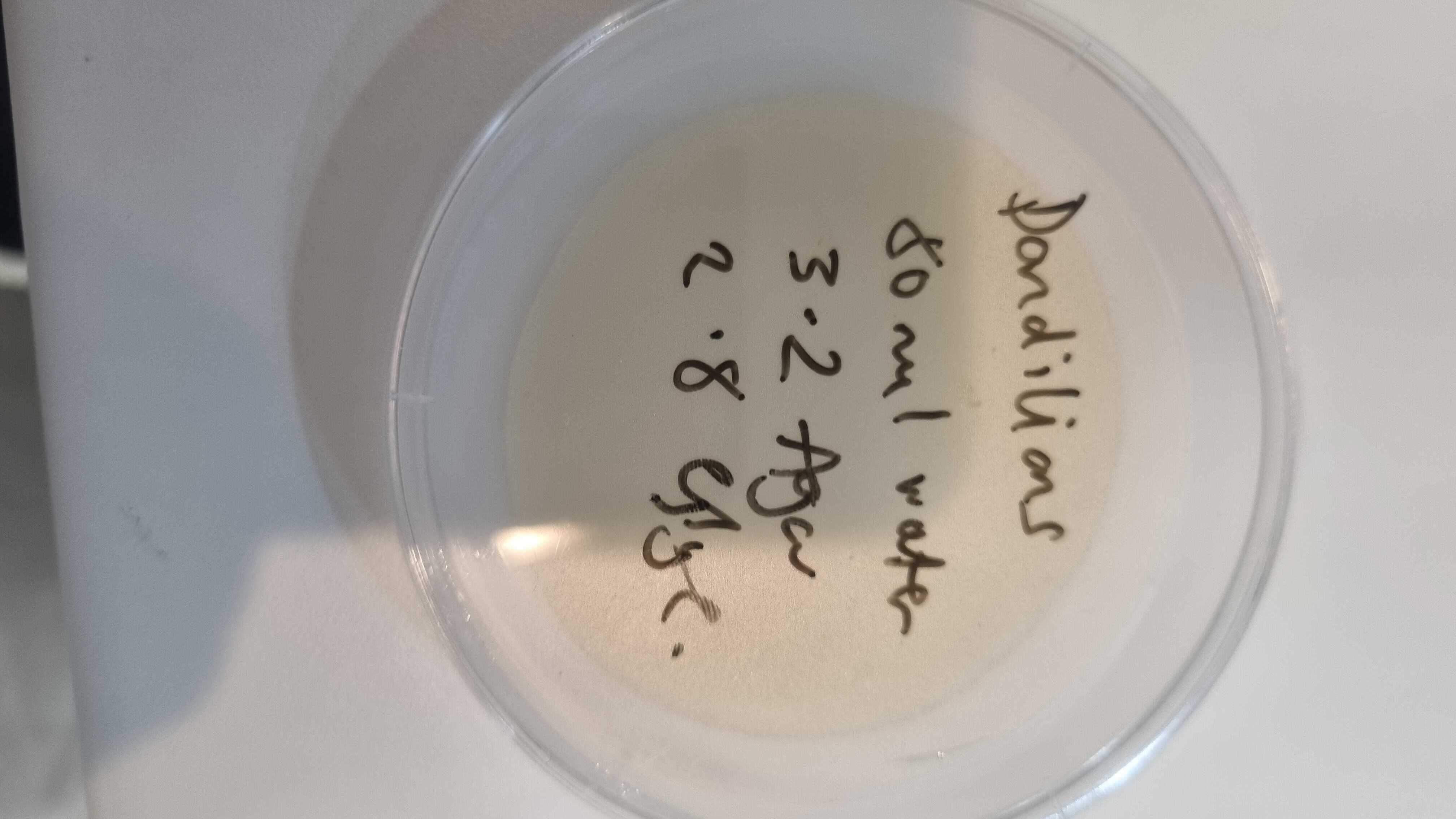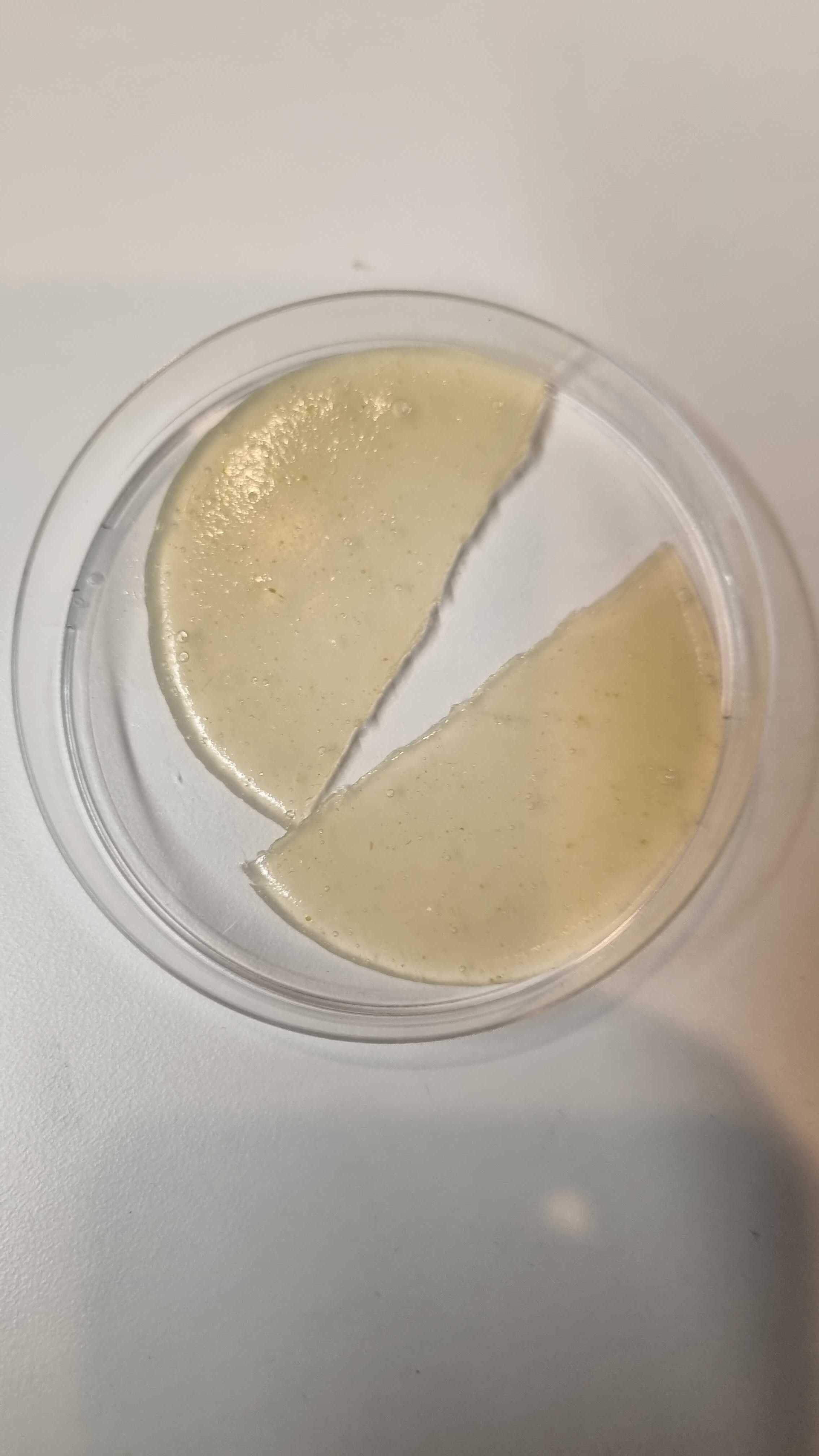Week 1 BioPlastics
 “Do we make new things in order to continue business as usual or to find other ways of doing things…“
“Do we make new things in order to continue business as usual or to find other ways of doing things…“
paraphrased from Maarten Smith’s lecture - Introduction to Bioplastics
“A bioplastic is a biobased polymer derived from a biomass, and it may or may not be biodegradable”
from bioplastics cookbook
BIO- ‘plastics’ made from organic materials
Begining with Agar as a plant based polymer
Based on the cookbook the suggested recipes are:
| Agar | Glycerine | Water | Brittleness |
| 0.6 g | 0.0 | 40 ml | 1 |
| 0.6 | 1.4g | 40 ml | 0.75 |
| 0.6 g | 2.7g | 40ml | 0.5 |
| 0.6 g | 5.4g | 40ml | 0.25 |
First recipes tested:
| polymer | glycerine | water | extras | results |
| agar 3.2 g | 2.8 g | 80 ml | dandelion extract for colour | disk of jelly like substance |
| agar 32.g | 2.8 g | 80 ml | coffee extraction |




Observations:
Working with small quantities of water makes it hard to control the evaporation and substance - this was supposed to be one up from brittle but was a loose jelly like
- second attempt to create a more brittle substance :
| Agar | Glycerine | Water | extras |
| 8g | 0g | 200ml | chili powder |
- Will the chili which is a powder and was ‘eyeballed’ in affect it
- the substance was thick and viscous when poured still hot into a plate and a metal mould of an elephant

